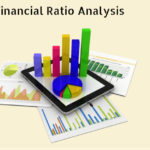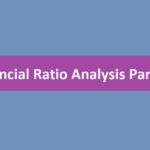Expenses information
In the previous chapter, we had learned about the earnings of the company. In this chapter, we will learn about the company’s expenses and related notes in the P&L statement. Generally, the expenses incurred on different functions of the company are divided into different parts – either according to the trend of expenses or according to the cost of sales method. Every expense of the company should be accounted for in the profit and loss statement or in the notes. You can see below that there is a note attached to the line item in front of each expense.

The first line item in the expense portion of P&L is the cost of materials consumed, that is, the cost of raw materials purchased by the company to make its main product. You can see that this is the biggest expense of the company. For FY14 this expenditure is Rs 2101 crores while for FY13 this expenditure was Rs 1760 crores. Detailed information about this is given in Note No. 19.

You can see that Note 19 gives information about consumption of raw materials. The company used lead, lead alloys, separators and other things which cost Rs 2101 crore.
The next two items are Purchases of Stock in Trade and Change in Inventory of Finished Goods, Change in Inventories of finished goods , work–in-process & stock–in- trade). Information about these two is given in detail in Note 20.
Any manufactured goods or finished goods that the company buys to run its business is called purchases of stock in trade. The company spent Rs 211 crore on this. Next we will understand it in detail.
The cost of manufacturing such goods, which the company sold this year, but which was produced in the previous year, is called the change in inventory of finished goods. The expenditure in FY14 was Rs 29.2 crore.
If this figure is seen in (-) i.e. negative, then it means that in FY14, the company made more batteries than it sold. The company deducts that expense from the current year’s expense (since it was created in the previous year) to show the ratio of sales-to-sales expense. Later, when the company sells that goods, its expenses will be shown. Whenever this expense is added to the P&L (after the goods are sold), this expense is shown as a line item of Purchases of Stock in Trade.
Here both the line items in Note 20 are explained in detail.

The above information is very clear and it is very easy to understand. That is why there is no need to go into further detail here, it is only necessary to know here how much is the total expenditure. You will learn more about this by going to the module of Financial Modeling.
The next line item in the company’s expenditure is Employee Benefit Expense i.e. expenses incurred on the facilities of the employees. The company has shown the salary of its employees, their provident fund and other such expenses as shown here. Here this expenditure was Rs 158 crore. This is discussed in detail in Note 21.
Remember that this asset (computer server) may have been purchased this year, but its useful life is for the next 5 years. Therefore, it is necessary that its cost should be divided over the next 5 years i.e. instead of showing the big expense once, the company can show this expense as a small expense for 5 years.
In this way ₹ 65000 will be divided in 5 years and then 65000 /5 = ₹ 13000 will be depreciated every year. After showing this depression, now Zerodha will earn ₹100000 – ₹13000 = ₹87000
In the same way the value of intangible asset is also calculated, but there this method is not called depreciation but amortization.
Now here is a very important thing which you should understand. Zerodha deprecated its server for 5 years and divided the price for 5 years, but in reality the company spent ₹ 65000. Now where will this figure of expenditure appear in the P&L? As a fundamental analyst, how do we know where the company’s money has gone? For this you have to look at the cash flow statement. We will understand this in the next chapter. Now look at Note 23 where depreciation is shown.

The last line item in the expense portion of P&L is -Other Expenses, which is 434.6 crores. This is a huge amount, so it is necessary to look at it in detail.


It is clear from this note that other expenses include production, selling, administrative and other expenses. For example, here you can see the name that Amara Raja Batteries has spent Rs 27.5 crores on advertising and promotion.
Adding all this, you will see that the total expenditure towards P&L of Amara Raja Battery is Rs 2941.6 crores.
Profit before tax (Profit before tax)
When expenses are deducted from earnings but the liability of tax and interest is included in it i.e. both of these are not paid, then this profit is called profit before tax. Looking at the above P&L statement, we will see that ARBL has given its PBT i.e. Profit Before Tax and Exceptional Item numbers.
In simple language the PBT of the company i.e. Profit Before Tax is:
PBT stands for Profit Before Tax = Total Income – Total Operating Expenses
= 3482 – 2941.6
= Rs 540.5 crore
But here an Extraordinary item/Exceptional item is visible which is Rs.3.8 crores which will be deducted from this amount. Such expenses are those which are incurred once for a particular reason and the company assumes that these expenses will not happen again and again. That’s why they are shown separately in P&L.
So now there is new PBT i.e. Profit Before Tax
540.5 – 3.88
= Rs 536.6 crore
The figure below shows the PBT of the company in the P&L of ARBL:
Net Profit After Tax (Net Profit After Tax)
The amount that comes out after deducting tax from the total earnings of the company is called operating profit or net operating profit after tax. It is the last part of any P&L statement. Profit after tax is also called the bottom line of P&L.
As you can see in the above picture that to reach PAT i.e. Profit After Tax, we have to deduct all types of tax expenses from PBT. Here current tax means corporate tax which is to be paid this year. This amount is Rs 158 crore. Apart from this, the company has also given other taxes here. Including all taxes, the company has paid tax of 169.1 crores. If the company’s PBT i.e. Rs 536.6 crores is deducted from the company’s tax of 169.2 crores, then the PAT amount comes to Rs 367.4 crores.
Means Total PAT = PBT – Tax
The final part of a P&L statement is the EPS, which is shown in both the Diluted and Basic modes. EPS is most commonly used for financial analysis of a company. EPS shows how the directors and managers of the company are running the company. EPS means how much money the company’s management has earned on each share of the company. You can see that the management of ARBL has earned 21 per share. Its calculation is shown in the chart below.
The company has stated here that it has 17,08,12,500 shares. If this number is divided by the number of PAT, we get the number of EPS.
in this instance
367.4 crore will be divided by Rs.17,08,12,500 which will come to Rs.21.5 per share
Conclusion
Now let us take a look at the P&L statement in its entirety.
Hope you understand this statement more easily now. Remember that each line item has a note attached to it. You can use that note to see that line item in detail. By the way, you still have to analyze these data for use in market decisions. We will understand how to do this when we talk about the financial ratio. Two more financial statements are attached to the P&L statement – the balance sheet and the cash flow statement. Next we will discuss about them.
Highlights of this chapter
- The expenses section of the P&L gives all the details of the company’s expenses.
- To know in detail about each expense, the note attached to it can be read.
- The method of depreciation or amortization is used to divide an expense into smaller parts and use it in P&L for many years.
- Finance cost refers to the amount spent by the company to pay interest and take loans.
- PBT = Total Income – Total Expenditure – Exceptional Item
- Total PAT = PBT – Total Tax
- EPS tells the earning potential of the company per share. Earning here means earnings after PAT and preferred dividend.
- EPS = PAT/ Total Ordinary Outstanding Share

Gaurav Heera is a leading stock market educator, offering the best stock market courses in Delhi. With expertise in trading, options, and technical analysis, he provides practical, hands-on training to help students master the markets. His real-world strategies and sessions make him the top choice for aspiring traders and investors.









